UX/UI Design (2019)
Since 2017, Mercedes-Benz and Bosch have collaborated on solutions for automated urban driving. In November 2019, they launched a pilot project for an app-based ride-hailing service using automated Mercedes-Benz S-Class vehicles in San José, California.
The Daimler Autonomous Services (DAS) team at Daimler Mobility AG developed an app that allows users to book rides in automated S-Class vehicles from designated pick-up points. This service went live in Berlin in September 2019 and in California’s Bay Area in fall 2019.
Following the app launch, the goal was to create a seamless user experience through a unique co-driving product, enabling users to control essential aspects of the autonomous ride while remaining in self-driving mode, fostering a collaborative human + AI experience.
Due to confidentiality and security policies, I cannot publicly display specific designs and visuals from this project. However, upon request, I'm happy to discuss my role, processes, and contributions in detail.
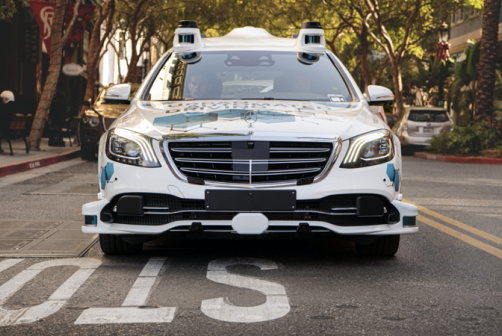
The Challenge
Designing for Autonomous Vehicles (AV)
The main challenge for DAS in designing for Autonomous Vehicles (AV) was to create an entirely new, driverless travel experience. Although the vehicles are autonomous, human interaction is essential in the early stages, as safety drivers must supervise the technology over the next decade.
High-Level Goals:
Develop an innovative driverless platform for both safety drivers and riders.
Ensure the platform is fast and easy to use for anyone, anywhere.
Provide safety drivers and riders with full control over the car.
My Role
Since July 2019, I have led the end-to-end design process for the In-Vehicle experience, collaborating closely with a multidisciplinary team, including a UX/UI designer, service designer, product managers, product owner, and software engineers. My responsibilities spanned the driver interface, passenger application, and fleet management tool, ensuring a seamless and intuitive experience across all touchpoints in the autonomous vehicle ecosystem.
The Process

Understanding Users Behaviours
Deep human focus Workshop with the Berliner drivers and fleet managers to gain first insights from the current user experience to identify new and unexplored perspectives and courses of action to follow, which have allowed a more holistic look at the path towards different situations and a human-centered problem statement.
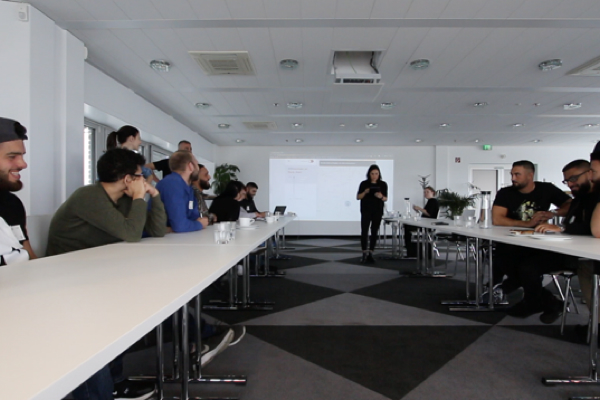
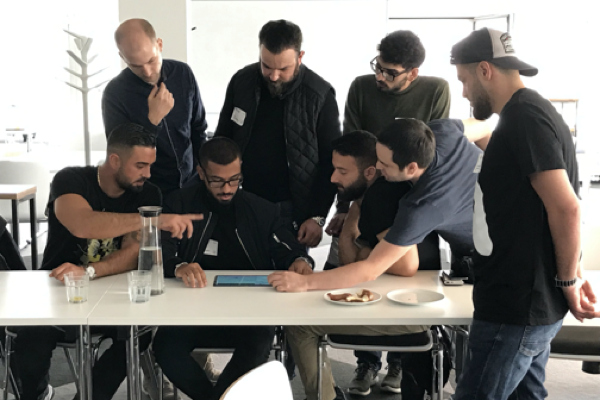
Generation of ideas for the Information architecture, user journeys and wireframes
Production of inexpensive, scaled down prototypes of the product and specific features in order to be tested with users and stakeholders to identify the best possible solutions for each of the problems identified and allowed us to have better idea of the constraints and understand how real users would behave, think and feel when interacting with the product.
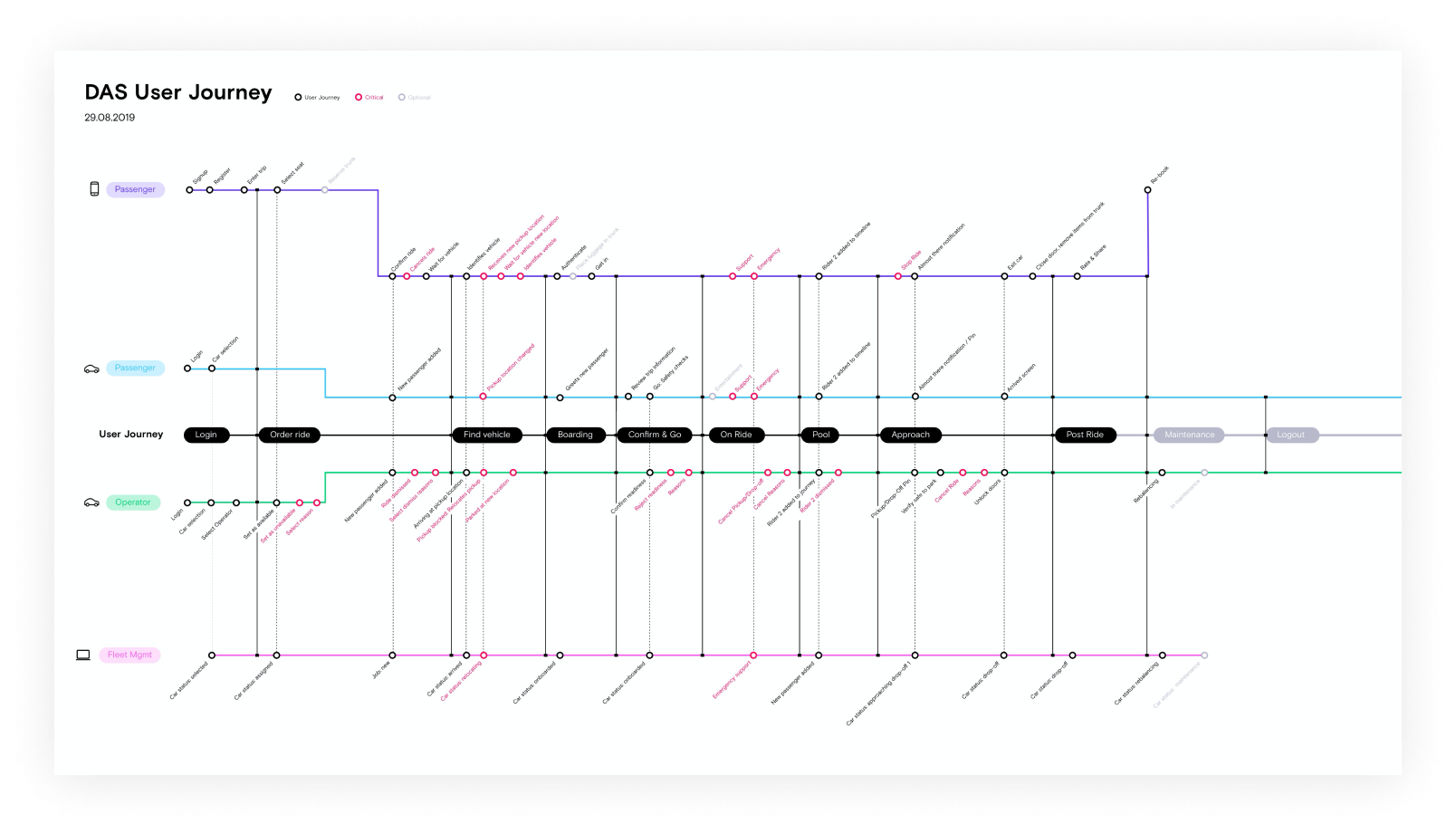
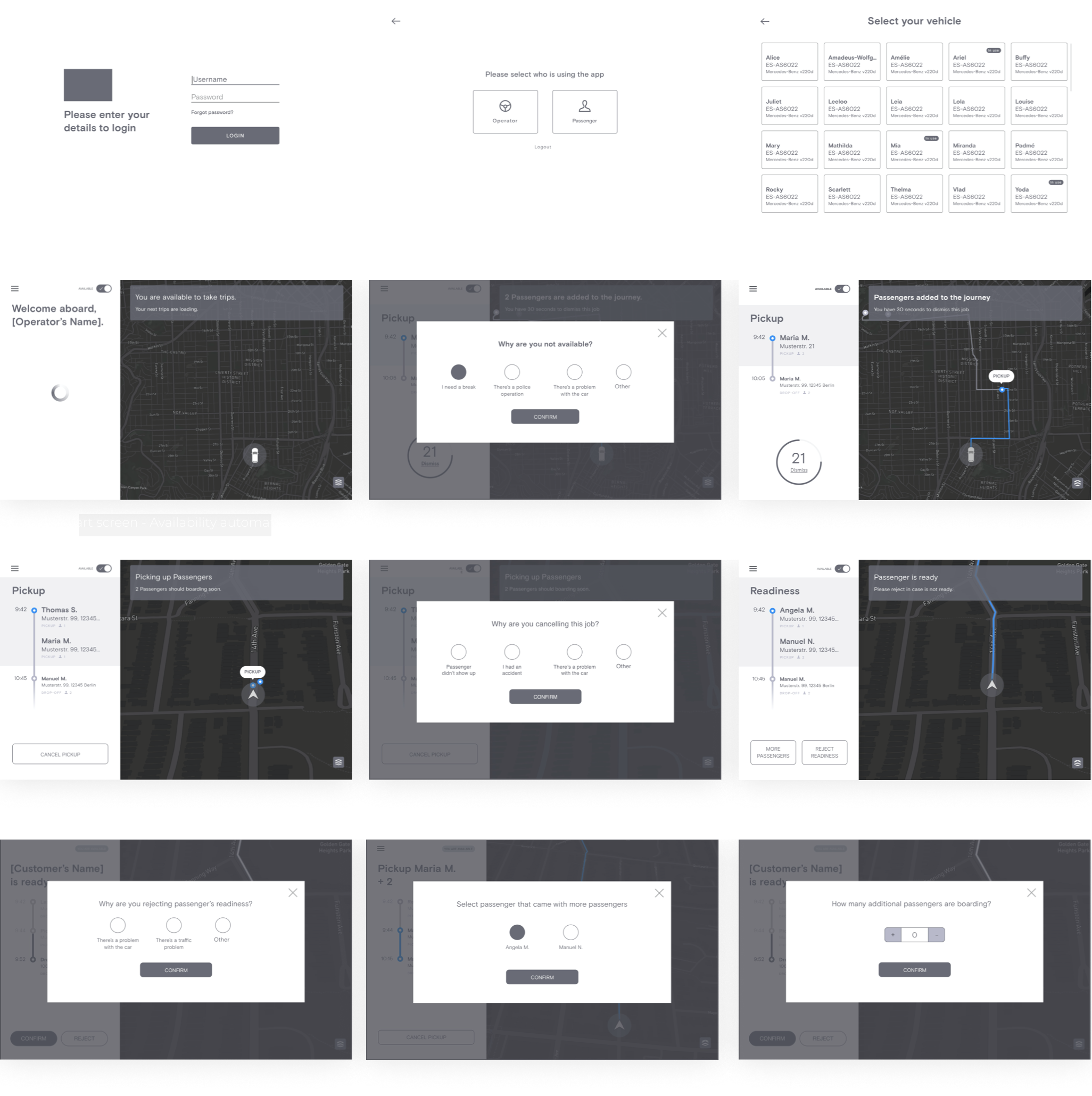

Validation of concept and design solutions through usability testings
User testing best solutions of the ideation with fleet drivers, stakeholders and fleet managers that helped us to identify a number of specific situations in which drivers want to take back control from the AV due to comfort or preferences.
The focus was to solve complex scenarios and identify edge cases with less human interaction as possible.
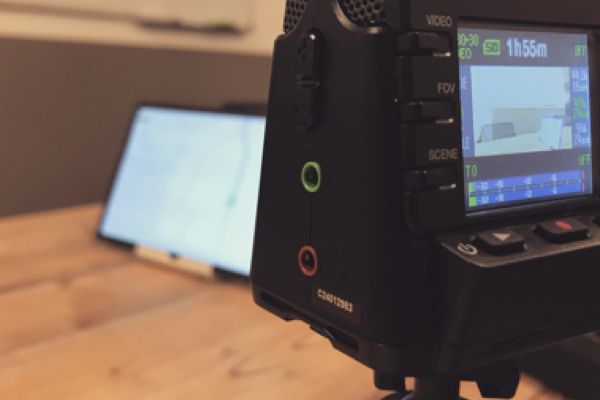

Improve and refine product design
Even during this phase, alterations and refinements are made in order to rule out problem solutions and derive as deep an understanding of the product and its users as possible.
Additionally, optimizations on the Passenger’s mobile App were made, in order to align to the whole experience.
Validation session with stakeholders in order to align with business goals and technical possibilities.
Provide design requirements, flows and user stories to the software engineers
Definition of user flows including edge cases, assets creation, product design specifications / acceptance criteria and design quality assurance through systematic design reviews with front end software engineers.
Result
Played a key role in the driverless pilot project, tested in Berlin and Silicon Valley, delivering a complete travel experience for riders in Mercedes-Benz S-Class vehicles.